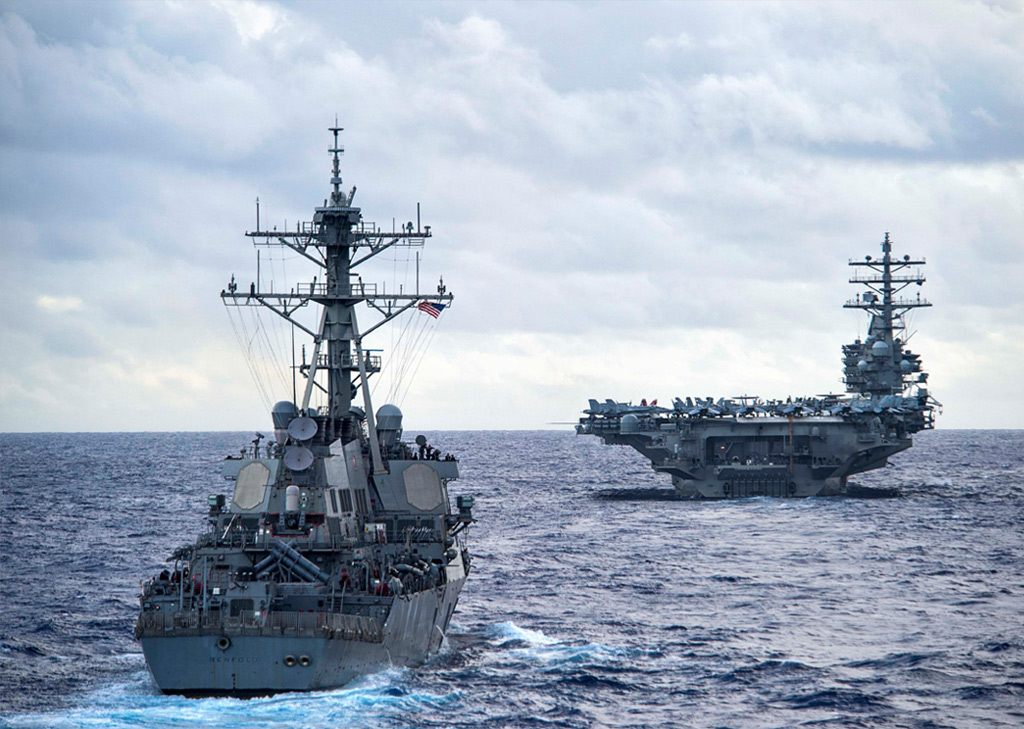Walk into the Philadelphia Gear Marine Center of Excellence in Santa Fe Springs, California, and you may think you’ve entered the engine room of an enormous ship. A house-sized gear drive runs at speeds and load conditions replicating those of a Navy ship at sea. The people here aren’t sailors — they’re highly-trained assemblers and technicians.
Timken acquired Philadelphia Gear in 2011 due to its leadership in custom-designed drives used in critical defense, energy, and infrastructure applications. Philadelphia Gear’s comprehensive services and solutions offer the same customer value associated with all Timken brands — technical expertise, reliability and performance.
Philadelphia Gear’s complex and intensive work with naval shipbuilders also shows that no power transmission challenge is too big to solve — literally or figuratively. And equipment builders across industries benefit from the knowledge and innovation the company generates from these collaborations.
Growing Trust Through Power Transmission Reliability and Innovation
With 100+ years of engineering expertise in marine applications, Philadelphia Gear — a part of Timken Power Systems — is the main reduction gear (MRG) equipment and service provider for several strategic classes of U.S. Navy ships, including the San Antonio (LPD-17) Class; Arleigh Burke (DDG-51) Class; and America (LHA-6) Class.
Two new MRG contracts were recently awarded in 2020. They include the new Gerald R. Ford (CVN-78) Class aircraft carrier, Doris Miller (CVN-81), and the Constellation (FFG-62) Class of Navy frigates. The Doris Miller is being built by Huntington Ingalls Industries – Newport News Shipbuilding (HII-NNS); the FFG-62s are being built by Fincantieri Marinette Marine (FMM).
Both are very different ships yet have similar demands for exceptional engineering. Capable of carrying more than 75 aircraft, the 1,100-foot-long Doris Miller will weigh 100,000 tons and achieve max speed of 30 knots (35 mph) when it is commissioned in 2032. Smaller yet equally resilient, the 500-foot-long FFG-62s will weigh about 6,700 tons and reach 26 knots (30 mph) at full speed. The first FFG-62 Class frigate is scheduled to enter service in 2026.
“The MRGs we engineer, manufacture, test, and service for all Navy ships must perform for 30 to 50 years,” said Carl Rapp, Philadelphia Gear President and Group Vice President, Timken Power Systems. “The application is tough, the standards are high, and the design process takes years. It’s a powerful statement that our teams build engineering solutions with that kind of endurance.”
MRGs: the Linchpins of Marine Propulsion
Depending upon the ship, an MRG unit can measure up to 15 feet high and 20 feet wide. The unit’s complex arrangement of gears and shafts transfer power from the vessel’s prime movers — gas turbines, diesel engines, steam turbines, or electric motors — to its propeller shafts, allowing the ship to move at various speeds.
The size and critical nature of MRGs prioritize them among the first pieces of equipment that shipyards purchase, said Francis Spencer, Marine Program Manager for Philadelphia Gear. “MRGs are installed in machinery spaces, far below deck and the waterline,” he said. “They are delivered early for installation into the initial framing, and then the shipyard essentially builds the ship around them.”
This means lead times are critical, which in naval shipbuilding translates to about two years from date of order. That’s the time it takes to manufacture, assemble, test, and deliver a complete MRG shipset to a shipyard. An MRG shipset is typically one starboard and one port reduction gear. This lead time doesn’t include the upfront engineering and configuration work to design the MRGs which typically takes 5-7 years prior to contract award.

"The MRGs we engineer, manufacture, test and service for all Navy ships must perform for 30 to 50 years. The application is tough, the standards are high, and the design process takes years. Its's a powerful statement that our teams build engineering solutions with that kind of endurance."
– Carl Rapp, Philadelphia Gear President and Group Vice President, Timken Power Systems
Design and Manufacturing for Next-Generation Ship Platforms
Similar to Timken’s longstanding bearing expertise in military applications, Philadelphia Gear’s military marine engineering knowledge dates back to the early 20th century, when it provided Navy ships with gearing during World War I and II. Over time, the Navy demanded greater speeds, capabilities and maneuverability for its ships. Philadelphia Gear responded, adapting its technology for new MRG platforms and, in some cases, acquiring intellectual property for a number of military and commercial marine MRG designs from former competitors.
Regardless of a ship’s function or size, Philadelphia Gear designs optimal gear solutions based on three key elements: the ship’s shaft speed & horsepower; the hull type, expected operating conditions, & displacement (weight) of the ship; and the shipbuilder’s planned layout of the propulsion room, including engine type.
In the case of the FFG-62 Class frigates for the Navy, Philadelphia Gear engineers adapted their MRG design to FMM’s first-of-its-kind propulsion and drivetrain system. The new MRG design enhances propulsion system reliability, which is especially critical when ships are at sea and far from a port where they can get maintenance support.
“The FFG-62 required a completely new MRG configuration,” Spencer said. “Our engineers worked closely with FMM on the gear solutions to fit into the ship’s footprint. This collaboration occurred and was iterative, during both the preliminary and detailed design phases.
End-to-End Service for Lasting Performance
Due to the challenging requirements of military marine applications, shipbuilders and the Navy select suppliers with exceptional technical capabilities, upon whom they can depend after a ship leaves the shipyard and enters commissioned service.
“These customers understand the importance of performance, reliability, and long-term service outcomes,” Spencer said. “They respect our engineering expertise and how we respond when the equipment needs support — tomorrow or decades from now.”
For more information about Timken capabilities in defense markets, click here.
For more details about Philadelphia Gear’s capabilities in marine applications and across the industrial spectrum, click here.
